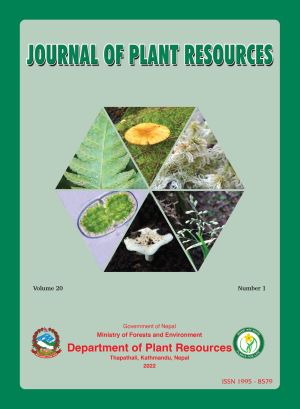Some Barcoding DNA Sequence Analysis of Sphagnum nepalense H. Suzuki, a Bryophyte Species Endemic to East Nepal
DOI:
https://doi.org/10.3126/bdpr.v20i01.56577Keywords:
Bootstrapping support, Evolutionary tree, GenBank accession, Molecular markers, PlastomeAbstract
Sphagnum nepalense is a bryophyte endemic to Nepal. The objective of the present study is to analyze DNA barcoding markers useful for delineating the Sphagnum species. Here, a specimen of Sphagnum nepalense collected from the bank of Maipokhari lake, Ilam (2107 m asl) was used. Three chloroplast loci from the sample viz. rbcL, psbA-trnH and trnF-trnL, the latter two being intergenic spacers, were amplified and sequenced. Four accessions of plastome sequences of S. junghuhnianum, S. multifibrosum, S. palustre and S. subsecundum were retrieved from the National Center for Biotechnology Information (NCBI). Evolutionary analysis was performed following the Maximum Likelihood approach using MEGA X. The result showed that the evolutionary tree generated with single locus trnF-trnL and combined sequences of trnF-trnL and psbA-trnH was better compared to that generated with the sequence of other single locus and even the combined sequence of rbcL, psbA-trnH and trnF-trnL. The sequence data generated in this study for Sphagnum nepalense are novel to the scientific community.




